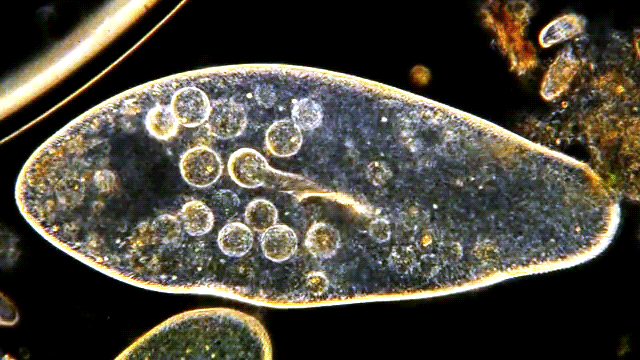Fascinating video on COVID-19 Questions around testing, vaccines, treatments, who gets ill and who doesn’t – these all relate to immune memory.
This video explains how your immune system remembers a previous infection to protect you, and how vaccines take advantage of this.
Surprisingly, there’s some evidence that a cell can.
Written content from Jennifer Frazer

After all, how many other species have invented ibuprofen, electric blankets and happy hour? But it may be time to take a big breath, a step back, and ask what a cell can do.
I wrote recently about how Stentor, the enormous trumpet-shaped, single-celled predator, may be capable of changing its “mind.” But this is not the first or even second time free-living cells have shown signs that they possess something like cognition. It was already known that Stentor coeruleus—the swimming Stentor—is capable of “habituating” to touch; after you poke it long enough, it will stop contracting so readily, and it can remember to be less touchy for a least a few hours. No one knows how.
Stentor and another ciliate called Paramecium improve their escape times from capillary tubes (the microbial version of a classic experiment with rodents called the “runway” learning paradigm) with experience, although in the case of Stentor, only if the tube was vertical.
In the mid-20th century, Paramecium actually got the Pavlov’s dogs treatment (also called classical conditioning) several times. Beatrice Gelber, working alone at the University of Chicago in the 1950s, showed that paramecia trained to associate a metal wire with clinging, delicious bacteria would still flock to the wire even if it was later presented without bacteria. Paramecia trained on a wire alone would not. Her results were strongly criticized and mostly dismissed at the time, although one recent analysis concludes she proved the case.
In another notable example in the 1970s, scientists at Mankato State University exposed paramecia to Pavlovian training sessions of a four-second tone paired for the last two seconds with an electric shock. After two or three sessions, about half or more of the apparently gun-shy paramecia initiated “avoiding response”—a backward jerk and/or turn and resumption of swimming—in response to a solo tone.
Incredibly, they could remember to do this for at least 24 hours. They could also be untaught if the tone continued to be unaccompanied by a shock, and then be retrained by pairing them once more. If this study is to be believed, they could also somehow distinguish between 300 and 500 hertz tones in deciding whether to initiate an escape. Yet other conditioning experiments with ciliates using repellant stimuli like shock or heat failed to show an association. It’s fair to say that, if the case is not closed on cells and associative learning, the evidence is highly suggestive.
One further example of wild cellular learning merits mention. In an experiment published in 2008, the slime mold Physarum (a single-celled giant amoeba) learned to anticipate periodic puffs of cold dry air. After three regularly timed puff cycles, the slime mold reacted as if it was expecting another puff at the appropriate time by slowing down, its usual reaction to the unwelcome air. It not only remembered; it could somehow tell time.
If it exists, what could the mechanism of all this apparent learning and deciding be? Single cells obviously have no brains or neurons, but they have many other complex structures and molecules upon which natural selection can act. In the case of ciliates like Stentor and Paramecium, as I wrote last time, this is rather an understatement.
Just because other life isn’t wired the way we are does not mean they don’t have hardware capable of producing something like it, perhaps in ways radically and fascinatingly different from ourselves. If the end is the same, do the means matter?
But there is an even more shocking possibility that is being entertained by a growing and diverse cadre of Ph.D.s: animals and ciliates do use the same mechanism.
Take, for instance, the ferret. In an example of classical conditioning, ferrets trained to associate a signal with a stimulus that causes a blink at regular intervals will blink at the appropriate moment after hearing the signal alone. One 2014 study of ferret brain cells responsible for this eyeblink timing implied individual cells were capable of learning and anticipating this same interval all on their lonesome. Read more from SA





